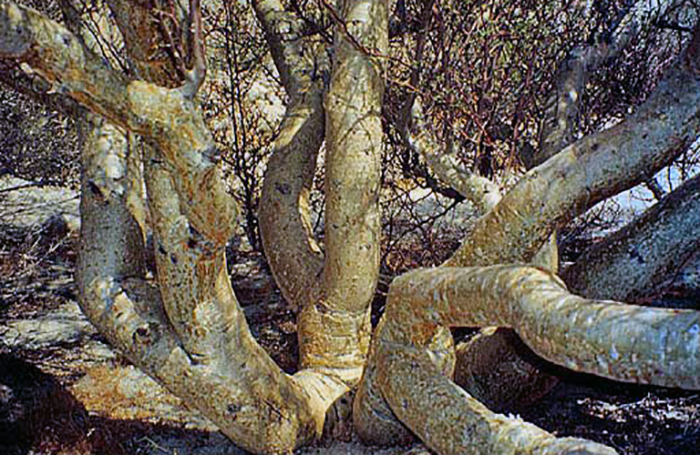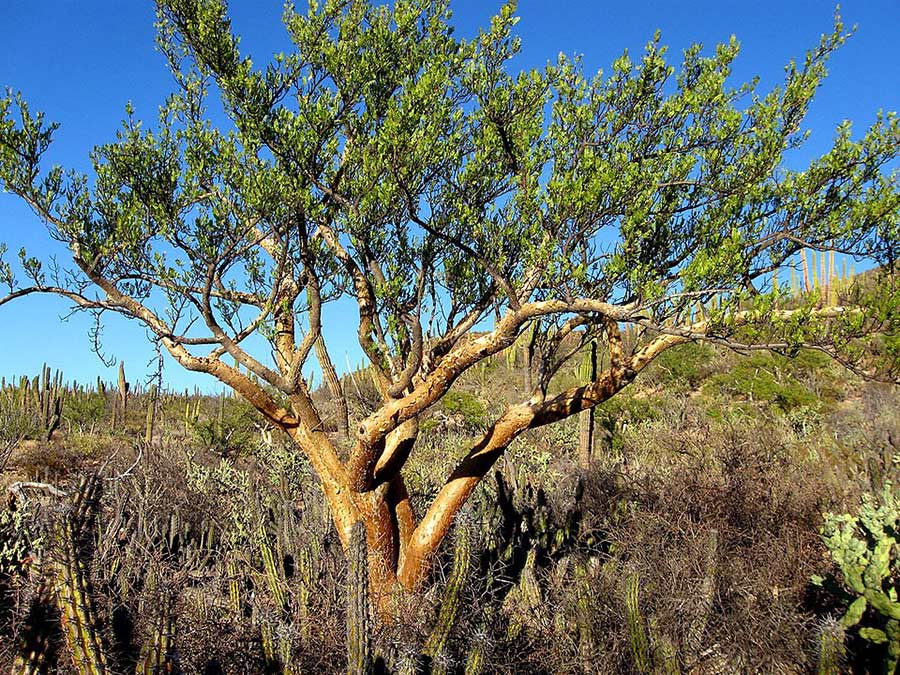Scientifically known as Bursera Microphylla, the elephant tree is a Sonoran plant species that grows in some of the driest deserts. But have you ever questioned about why and how the elephant tree thrives in these types of severe disorders? You have come to the correct place if youre keen to discover the identical and the essential guiding its survival.
In the beneath paragraph, nicely dive into the specifics of the desert trees, specifically the elephant tree, enlightening its factors and the abilities that assistance its survival and support it flourish in incredibly hot and dry desert ailments.
Allows examine.
Elephant Tree Adpatance to Desert
In the severe environments wheredesert flora and faunahave tailored to prosper, the elephant tree exemplifies survival by its deep roots and drinking water storage abilities. The attributes mentioned underneath will help you be aware of the very same though supplying a specific being familiar with of every single element.
- Deep Root Technique:Elephant trees have comprehensive root techniques that go deep into the soil to accessibility groundwater this assures a constant h2o source during, assisting to endure in the most arid situations.
- H2o storage:They have substantial and thick trunks and branches that shop h2o for a long period of time, allowing them to face up to huge drought durations.
- Leaf Surface area:Elephant trees have small and leathery leaves that lessen water loss to a good extent by transpiration.
- Sunshine Tolerance:The waxy cuticle and the reflective area avoid daylight from absorbing and, therefore, significantly less drinking water usage even on the driest day.
- Dormancy:Elephant trees have a exceptional capacity of turning into dormant in the course of extraordinary problems this cuts down their metabolic exercise rate, preserving drinking water and ensuring survival.
History and Overview of Elephant Tree
Around the decades, the elephant tree’s botanical conditions have created, building it extra suitable to improve in arid circumstances. One of the vital variations is the means to store h2o.
It has thick trunks and branches that serve as excellent drinking water reservoirs, fulfilling the trees demands, even in the course of prolonged drought periods. Further more, the tree sheds its leaves during droughts, which decreases drinking water decline, contributing to its survival in arid problems.
Furthermore, elephant trees create sticky resins that not only chorus herbivores but also again from any wounds, avoiding drinking water decline. Additionally, its small and waxy leaves have a reflective surface area that lowers transpiration and stops the effect of overheating sun. It has large roots that go deep down under the soil to access groundwater, which gets supplied during its body and is saved in the trunk and large branches.
Ecological Position of Elephant Tree
Elephant trees perform a vital position in desert ecosystems. The main position is getting a significant shade service provider. Its huge trunk and huge branches give a huge cover that gives rest beneath its branches from the arid circumstances.
This allows several species that want relief from the sizzling and dry climate. Even more, this aids tiny vegetation increase in their vicinity, including to biodiversity.
Additionally, the elephant trees leaves and fruit are foodstuff for a variety of desert herbivores like insects and birds. Apart from that, some animals also use its branches as nesting web-sites for searching.
How to Discover an Elephant Tree?
 qui
qui
Identifying an elephant tree with observation is simple all you need to have is affirm if that individual tree is an actual match of the underneath explanation:
Firstly, look at for the tree sizing. As the identify indicates, elephant trees are recognized for their astounding dimensions, which separates them from the surrounding trees. Next, look for its tree trunk. Usually, elephant trees have thick and durable trunks, comparable to an elephant’s leg. The trees bark need to look like peeling off a thing substantial. Lastly, observe the leaves very carefully. Elephant trees have little leaves with some environmentally friendly dots. Not to point out that elephant trees can only be uncovered in arid locations, i.e., deserts.
Summary
All in all, elephant trees resist deserts’ warm and dry climates due to the fact of their botanical properties. They are made use of in medicines and give foods and shelter to several animals, birds, and insects. These might be unusual to locate, but if you ever come upon a look-alike, the methods stated earlier mentioned can assist you affirm no matter whether you have identified an elephant tree or not.
Toward the finish, you should share no matter if the details fulfills your anticipations and whether or not the question you were being eagerly seeking for was resolved.
If you like it, share it!
Routinely Questioned Thoughts
How Do Elephant Trees Endure in Extreme Heat in Deserts?
Elephant trees have a good deal of features that make certain their survival even in the most scorching and dry situations. This consists of little leaves, reflecting barks, and thick trunks and branches which store water. All these possibly assistance in conserving h2o or battle from the harsh local weather.
Why Do Elephant Trees Shade Leaves During Droughts?
For survival. The shading of leaves during droughts is for lowering h2o loss by transpiration. This sudden adjust minimizes the trees dependence on water sources to a excellent extent, as shedding leaves conserves humidity in the trunk and branches, rising prospects of survival.
What Animals Depend on Elephant Trees for Their Survival?
Many desert animals rely on elephant trees for their survival. Prevalent names amongst them are desert tortoises and bighorn sheep. Further more, many bugs feed on their leaves and stems, although birds nest in their branches.
Is It Probable to Mature Elephant Trees Outdoors of Deserts?
In all probability of course, mainly because of the technological development in the sector. Nevertheless, elephant trees usually expand in arid regions like deserts, so they may well require further treatment if cultivated in semi-arid regions. Try to remember, these cant survive in temperate climates because of their variations to survive in a warm and dry climate.




